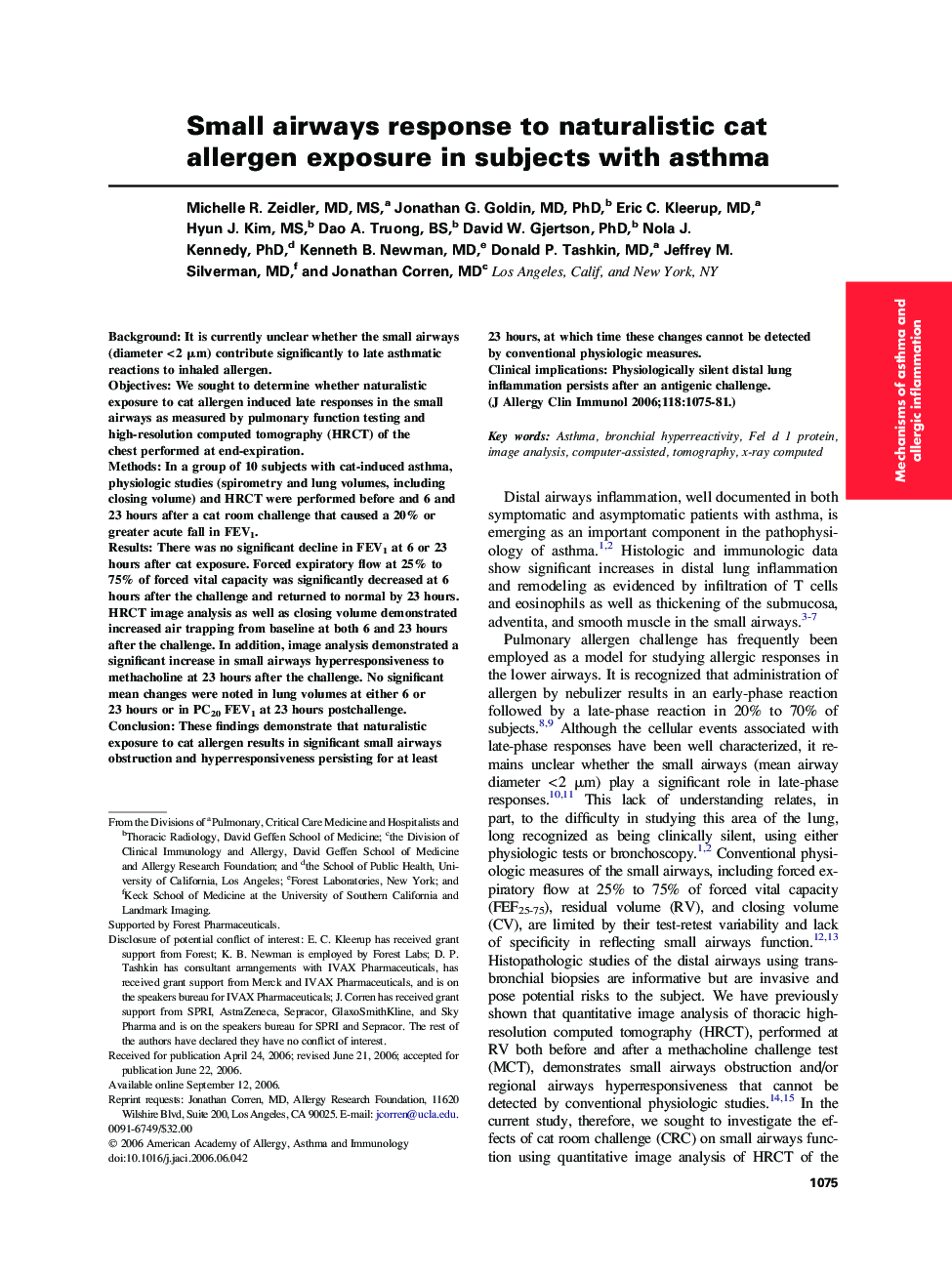| Article ID | Journal | Published Year | Pages | File Type |
|---|---|---|---|---|
| 3202553 | Journal of Allergy and Clinical Immunology | 2006 | 7 Pages |
BackgroundIt is currently unclear whether the small airways (diameter <2 μm) contribute significantly to late asthmatic reactions to inhaled allergen.ObjectivesWe sought to determine whether naturalistic exposure to cat allergen induced late responses in the small airways as measured by pulmonary function testing and high-resolution computed tomography (HRCT) of the chest performed at end-expiration.MethodsIn a group of 10 subjects with cat-induced asthma, physiologic studies (spirometry and lung volumes, including closing volume) and HRCT were performed before and 6 and 23 hours after a cat room challenge that caused a 20% or greater acute fall in FEV1.ResultsThere was no significant decline in FEV1 at 6 or 23 hours after cat exposure. Forced expiratory flow at 25% to 75% of forced vital capacity was significantly decreased at 6 hours after the challenge and returned to normal by 23 hours. HRCT image analysis as well as closing volume demonstrated increased air trapping from baseline at both 6 and 23 hours after the challenge. In addition, image analysis demonstrated a significant increase in small airways hyperresponsiveness to methacholine at 23 hours after the challenge. No significant mean changes were noted in lung volumes at either 6 or 23 hours or in PC20 FEV1 at 23 hours postchallenge.ConclusionThese findings demonstrate that naturalistic exposure to cat allergen results in significant small airways obstruction and hyperresponsiveness persisting for at least 23 hours, at which time these changes cannot be detected by conventional physiologic measures.Clinical implicationsPhysiologically silent distal lung inflammation persists after an antigenic challenge.
